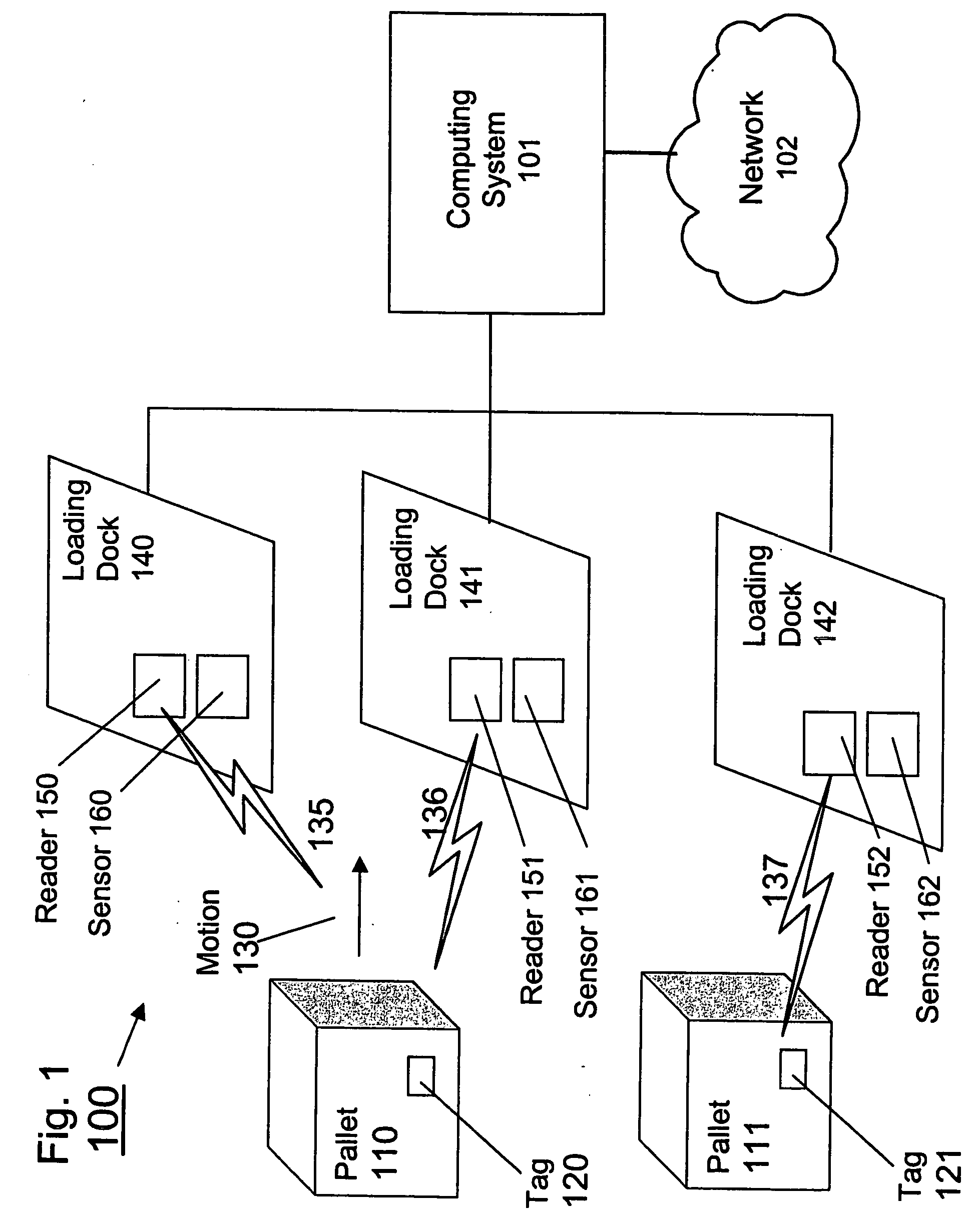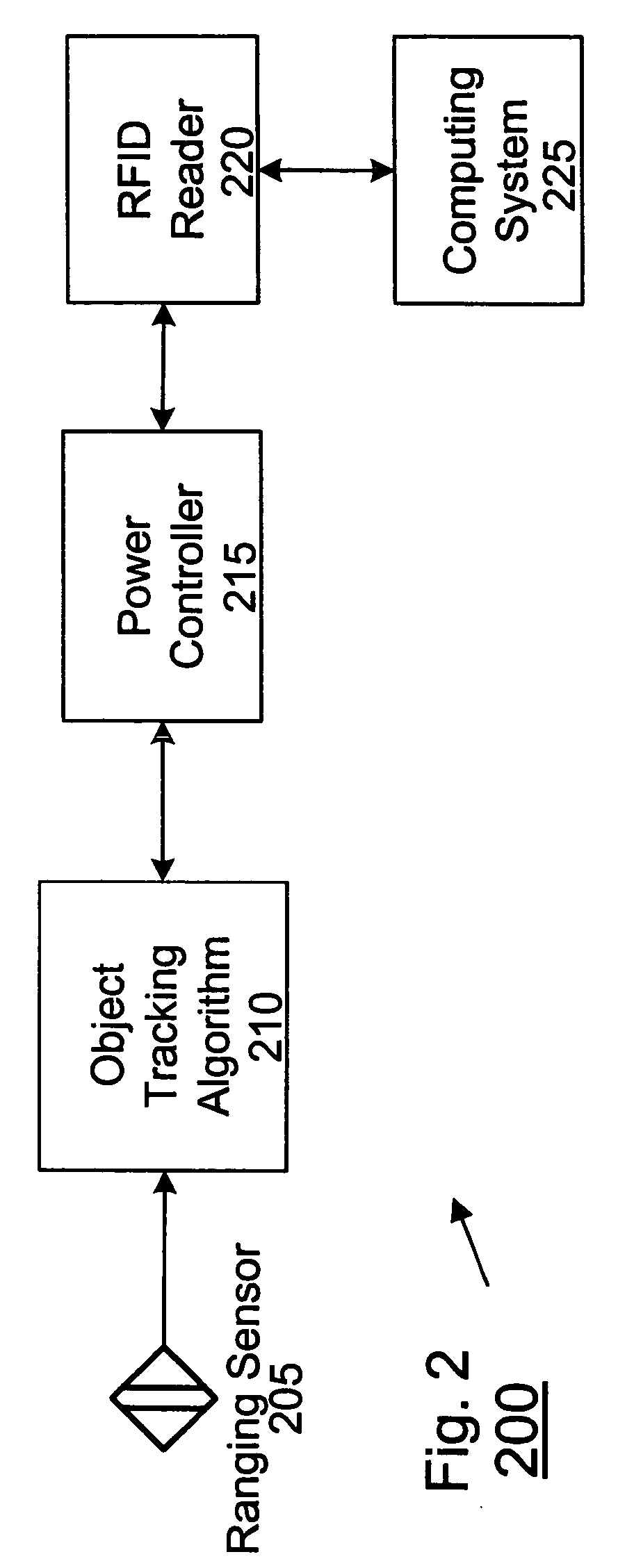Method and system for proximity tracking-based adaptive power control of radio frequency identification (RFID) interrogators
a technology of proximity tracking and power control, applied in the field of proximity tracking based adaptive power control of radio frequency identification (rfid) interrogators, can solve the problems of neighboring reader transmission, interference between readers, and the rate and range at which an rfid reader identifies rfid tags can be severely compromised
- Summary
- Abstract
- Description
- Claims
- Application Information
AI Technical Summary
Benefits of technology
Problems solved by technology
Method used
Image
Examples
Embodiment Construction
[0025] Referring now to the drawings, and more particularly to FIGS. 1-4, there are shown exemplary embodiments of the method and structures according to the present invention.
Exemplary Embodiment
[0026] An RFID system 100 that implements the invention is shown in FIG. 1. System 100 illustrates the invention for an exemplary application of a supply chain distribution center where many loading dock doors may be arrayed next to one another.
[0027] As would be evident to one of ordinary skill in the art taking the present application as a whole, the invention is not limited to this application and indeed can be practiced in many different environments and applications. For example, the invention may similarly be employed for a retail store point-of-sale check-out system, for an electronic toll collection system, for a customer service counter, etc. For the last three examples, the tagged objects may be retail items, vehicles, or people, respectively.
[0028]FIG. 1 depicts a series of l...
PUM
 Login to View More
Login to View More Abstract
Description
Claims
Application Information
 Login to View More
Login to View More - R&D
- Intellectual Property
- Life Sciences
- Materials
- Tech Scout
- Unparalleled Data Quality
- Higher Quality Content
- 60% Fewer Hallucinations
Browse by: Latest US Patents, China's latest patents, Technical Efficacy Thesaurus, Application Domain, Technology Topic, Popular Technical Reports.
© 2025 PatSnap. All rights reserved.Legal|Privacy policy|Modern Slavery Act Transparency Statement|Sitemap|About US| Contact US: help@patsnap.com



